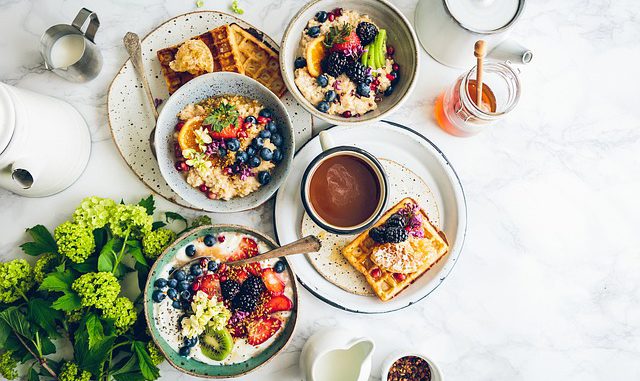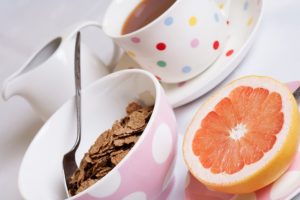
Dietary Fiber Benefits For Optimal Energy
Fiber or dietary roughage consists of the indigestible portation of food obtained from two different components. Insoluble fiber does not dissolve in water and can not be digested by the human digestive tract. Soluble fiber is found in oats, oat bran cereal, oat bran flakes, vegetables and Brussel sprouts are all good sources. The recommendation of a daily serving of fiber is 25-35 grams through natural or supplement forms however most Americans only consume 16 grams of fiber per day.
A healthy diet is usually described as including plenty of fresh organic fruits, vegetables, and lean proteins low in saturated fats high in roughage.. Soluble fiber can interfere with the absorption of dietary cholesterol and fat resulting in lowering low-density lipoprotein LDL bad cholesterol levels.
Soluble fiber is responsible for slowing the rate of digestion which nutrients and carbohydrates are absorbed in the bloodstream. This can be beneficial for controlling blood glucose also referred to as blood sugar levels by preventing rapid rises in blood glucose following a meal.
Approximately 66% of adults living in the United States are considered obese or overweight resulting in risks of health complications including certain types of cancers and diabetes. There are several factors that promote obesity including poor diet and high caloric intake. Most Americans do not consume the recommended amount of dietary roughage.. According to the FDA, the Food and Drug Association fiber is considered a nutrient of public health concern because low intake of fiber is well associated with potential health risks.
Both soluble and insoluble fiber makes you feel full for a longer period of time helping you eat less staying satisfied without needing to binge. Eliminate specific foods from your diet including sugar, sugary drinks, processed foods and saturated fats for better digestion
Fiber definition was originally defined as the components of plant material that resists human digestive enzymes and varies in definition among different institutions. According to the American Association of Cereal Chemists dietary roughage is the edible part of plants carbohydrate structure that are resistant to digestion and absorption in the small intestine. Dietary bulk benefits individuals in several ways including the physiologic effects of blood glucose attenuation, lowering cholesterol and preventing constipation. (1.)
Fiber does not bind to minerals and vitamins, therefore, does not prevent the absorption of vital nutrients in the digestive tract. Recent studies conducted for nine years on adults ages ranging from 50-71 found those who had the highest consumption of fiber were 22% less likely to die from the disease. In addition, adequate consumption of essential dietary bulk from foods lowered the risk of death from heart disease, cancer, respiratory infections, and other respiratory illness. Different types of fiber found in foods promote a feeling of fullness while providing essential nutrients the body needs for good health benefits.
Insoluble Fiber List
- Wheat Bran
- Vegetables
- Nuts and seeds
- Fruit
- Whole grain foods- whole grain bread, whole grain pasta, brown rice
Insoluble fiber consumed with the antiquate fluid intake is the safest most effective method to treat or prevent constipation. The assimilation of good food digestion is essential for optimal health. When digestion is not ideal problems may occur going far beyond blotting and gas-related symptoms.
A person energy is diminished from metabolic byproducts in the intestinal tract and is not limited to diarrhea, fatigue and allergic reactions as intestinal health may be compromised. Prevent intestinal imbalances using food therapy consuming an alkalizing diet containing plenty of cultured foods kefir, yogurt, miso soup, high roughage foods including whole grains, fresh organic fruits and vegetables and natural digestive enzymes pineapple and papa.
Probiotics reduce inflammation and promote optimal overall health with the combination of a healthy diet plan and fiber.
Supplement With Fiber
Using the supplementation of dietary roughage from food sources or supplements is the most effective way to prevent chronic diseases caused by high-fat diet intake. Beneficial substances from nutrient dense food that contain vitamins and minerals can have a positive health effect. They are naturally low in saturated fat and have no refined starches, sugars or sodium. Many grain-based foods and cereals are now fortified with the addition of minerals and vitamins.
Food manufacturers are adding more specific nutrients to their formulas are considered by the industry ” nutrients to get more of” because they are generally lacking in the American diet. Find fortified fiber dense foods at your local grocery by checking the nutrition facts labels for product description, calorie per portion and ingredients. The nutrition labels facts on beverage and food packages indicate the amount in grams and the percentage of daily value (%DV) of dietary fiber in each serving. (2.)

Types of Fiber
- Pectin Found in apples, pears, plums, quince, guavas, oranges, gooseberries, citrus fruit, cherries, grapes, and strawberries.
- Locust bee gum is a natural food additive thickening agent derived from carob seeds may provide soluble fiber helping to reduce blood glucose levels and cholesterol
- Gar Gum-substance from gar beans
- Cellulose derived from oats, vegetables, cereals from all plants in general
- Hemicellulose from legumes, timber, bran, cereals
- Pentose from oat, rye
- Lignin from Stones of fruit, vegetables, filaments of the garden bean and cereals
- Resistant Starch high in amylose from barley, corn, legumes, raw bananas, wheat.
- Psyllium
- Bran
- Beta-glucan soluble fiber found in dietary supplements and occurring in cereals, oats, fungi, bacteria.
According to the Mayo Clinic, medical authorities recommend adding foods rich in roughage to your diet each day. How much fiber do you need? For individuals living in the United States, dietary fiber consumption recommendations are 38 grams for males, 25 grams for females. Studies indicate most Americans are not getting the correct amount of fiber in their diet leading to health complication and obesity.
There are no guidelines for the elderly or ill patients. Anyone who is experiencing chronic abdominal pain, constipation or should seek medical attention for professional advice.
Prevent serious disease by obtaining nutritional needs from a wide verity of foods high in roughage. Developing healthy eating patterns can be beneficial for weight loss, lowering cholesterol, stabilizing insulin levels, and maintain digestive health. Dietary fiber is typically found in plant material usually consumed in raw, cooked or supplement form.
Food manufacturers can add fiber to processed foods and supplements however grain bran products have the highest source of fiber available including crude wheat bran 43 grams per 100 grams, crude corn bran 79 grams per 100 grams which are common ingredients in manufactured foods.
Boost your sluggish metabolism eliminating procced foods in your diet, choosing bulk dense foods for optimal digestion.
How to Consume More Fiber In Your Diet
Fiber supplements have been used for many reasons marked and sold to consumers for nutritional purposes and treatment of gastrointestinal disorders. Consuming more dietary fiber on a daily bases can also help to reduce cholesterol, lowering the risk of colon cancer and losing weight. Posible health benefits of eating more roughage is enormously affecting an increase in food volume without increasing calories providing satiety the feeling of being full resulting in the reduction of appetite. Fiber calculators now available online to assist you in making better choices in your diet to evaluate fiber content in common foods.
Eat More Fiber 6 Easy Steps
- Consume one serving of fresh or frozen fruit with each meal
- Choose high fiber snacks
- Select a wide verity of foods containing natural high dietary fiber content
- Consume at least 5 servings of fresh organic vegetables per day varying in color from dark green to red and orange
- Add high fiber cereals to your breakfast plan
- Choose whole-grain foods and pasta instead of refined carbohydrates
Prevent Obesity With Dietary Fiber
Fiber has many positive functions in the diet including aiding in energy intake control and prevent the risk of obesity. Diets rich in bulk whether consumed through eating organic fruits and vegetables or supplement form have reduced energy density compared to eating diets high in fat. This process is a result of the fibers ability to add weight and bulk to the diet
Prevent obesity with the addition of roughage in your diet to balance intestinal pH levels stimulating the intestinal fermentation production process of short-chain fatty acids helping to reduce the risk of colorectal cancer. Fiber attracts water during digestion helping to slow the emptying of the stomach and intestinal transit naturally shielding carbohydrates from enzymes delaying the absorption of glucose. This process results in lowering blood sugar levels.
Regulate blood sugar levels which may help reduce insulin and glucose levels in diabetic patients that may result in lowering the risk of diabetes. According to Mayo Clinic fiber helps control blood sugar levels in individuals with diabetes particularly soluble fiber can reduce the absorption of sugar resulting in improving blood sugar levels.
There is growing scientific evidence supporting physiological benefits of increasing fiber intake as beneficial to the reduction of disease and obesity. In the United States, regulatory agencies such as the FDA Food and Drug Association have given approvals for food products making health claims for fiber-enriched items.
In the year 2008, the FDA announced the approved health claims for qualified fiber products to display labels on products to include regular consumption may reduce lowering of blood cholesterol levels resulting in lowering the risk of cardiovascular disease and may reduce some types of cancer.
The FDA approval of viscous fiber sources includes Beta-glucan from rolled oats, whole oats or oat bran 3 grams per day, Psyillum seed husk found in supplement form powder or pill 7 grams per day recommendation, or beta-glucan from whole grains or dried milled barley 3 grams per day. Constant intake of fermentable dietary fibrous foods may help reduce the risk of obesity and some diseases.
An increased intake of roughage is typically used in the treatment of both obesity and diabetes due to the beneficial effects. Finding suggests that insulin resistance is elevated gradually reducing fasting glucose levels in individuals with diabetes. (4.)
The use of dietary fiber intake is to improve overall health as an approach to healthy nutrition and lifestyle. Foods rich in fiber are beneficial and tend to be rich in antioxidants, vitamin C, beta-carotene and other substances that may protect against some cancers. Individuals who consume a healthy diet also make better choices about exercising on a regular basis and not smoking.
Research indicates extremely promising evidence concerning fibers protective benefits, still more conclusive research is needed.
For more information on weight loss visit Weight Loss Diet Plans. Tour the whole website for additional information on how to lose weight and get fit. Sign up for a free sample of Garcinia weight loss supplement while supplies last.
FREE Bonus gift Weight Loss Diet Tips detailed information you can use to start losing weight using diet and fitness strategies used by experts who know how to get fast results. Click Here for more information.
Leave me a comment. How do you get more fiber in your diet? Join us on Facebook for more updates and information.
Cheers!
Patricia Lynn
Reference
FDA Food and Drug Association
Allrecipes High Fiber Recipies
Images Courtesy of StockSnap, GerDucks,at Pixbay.com